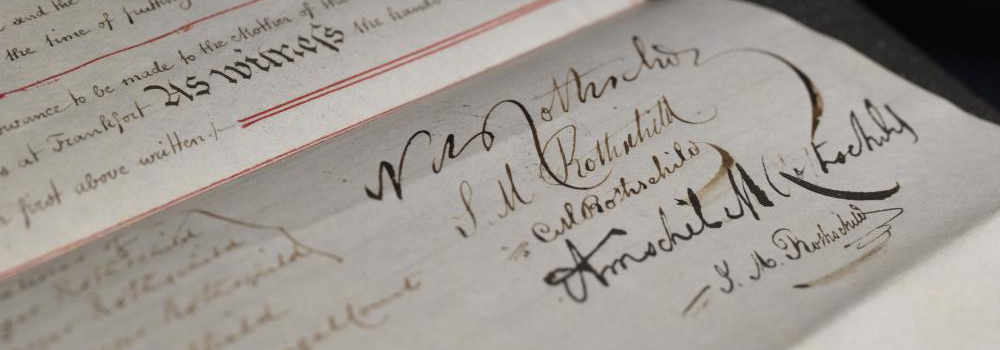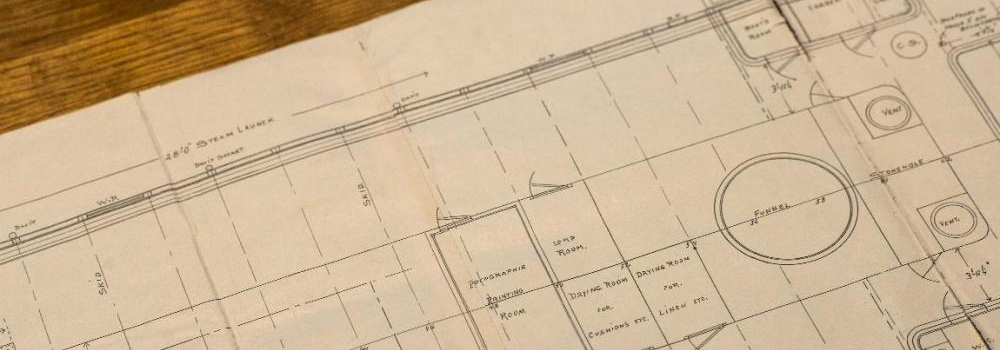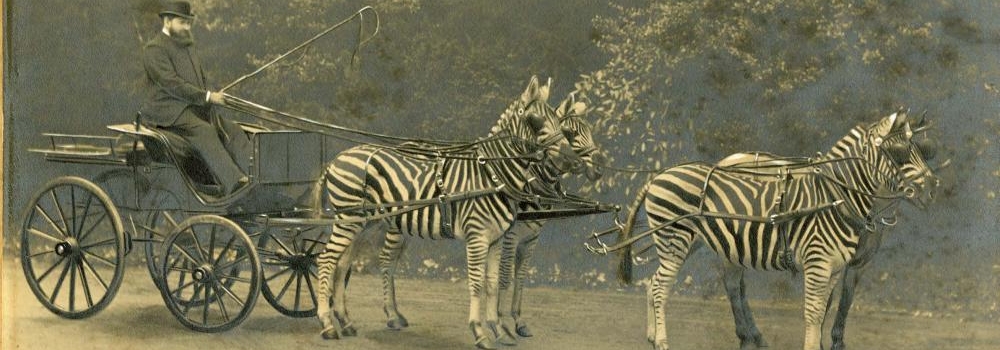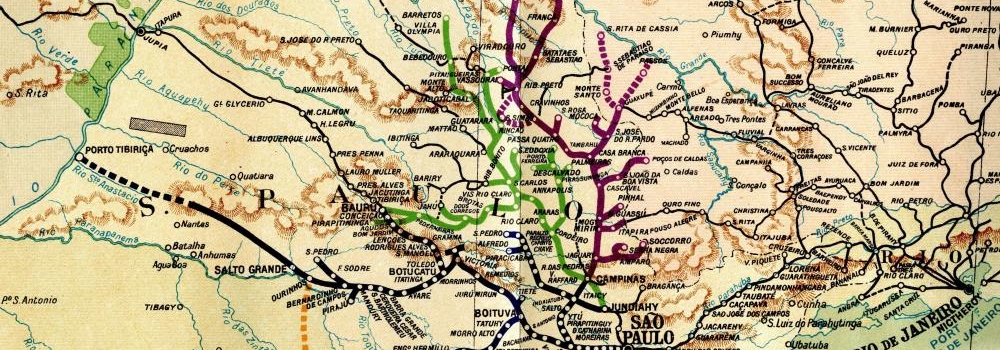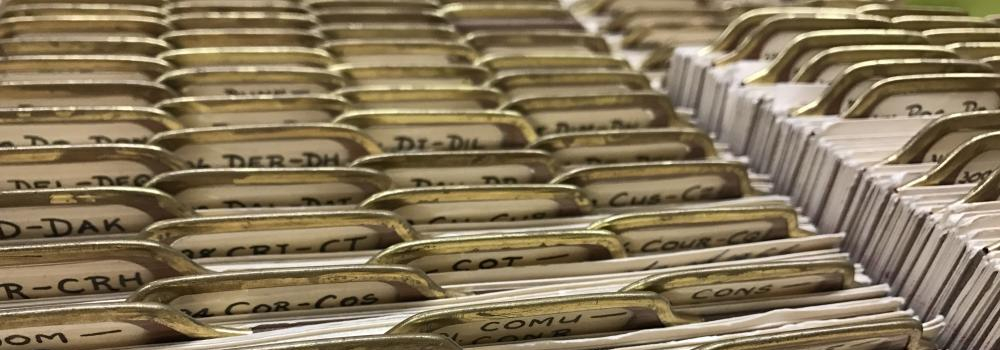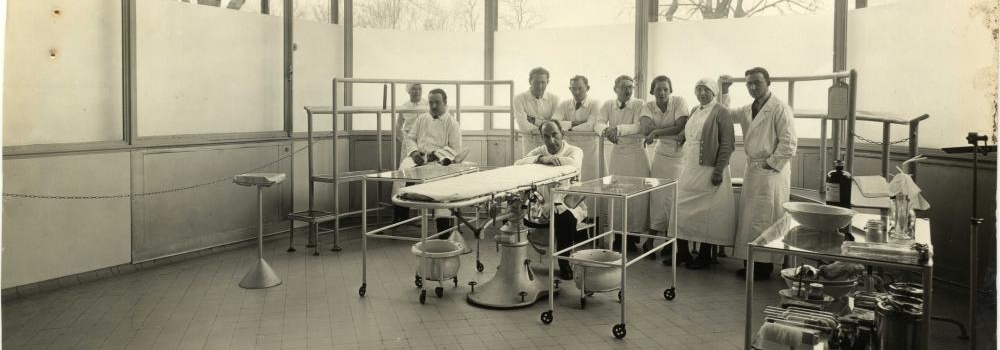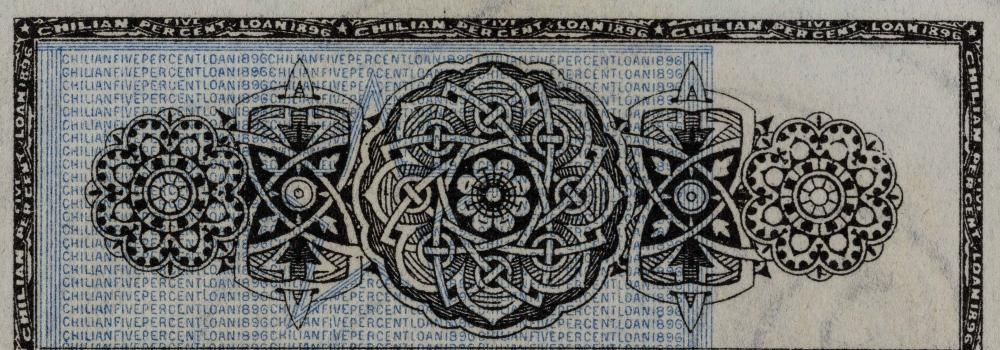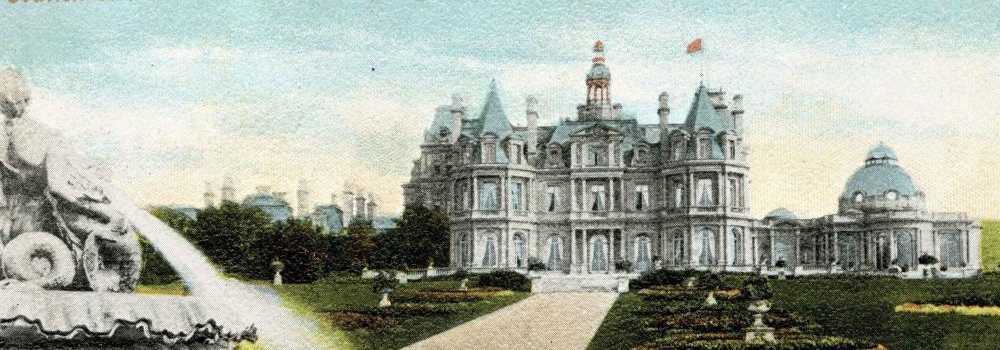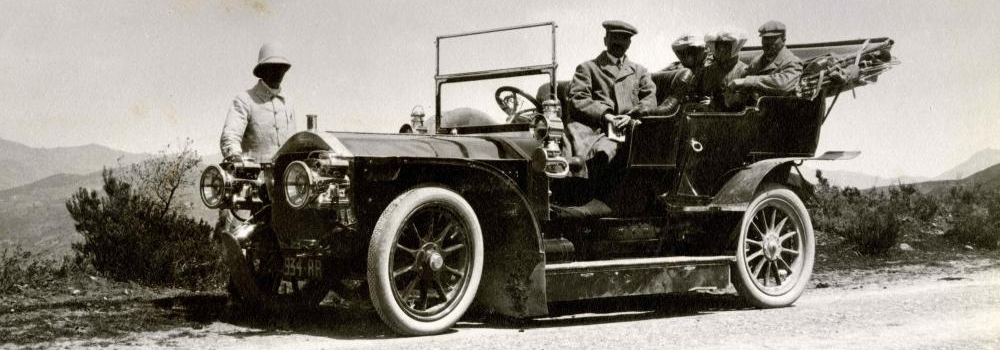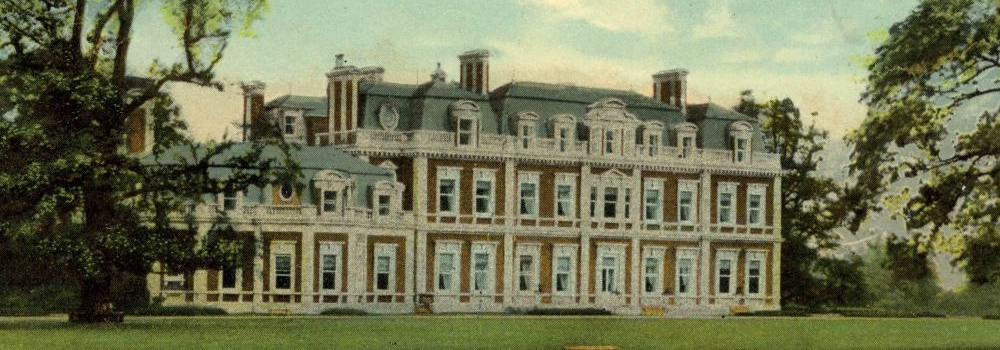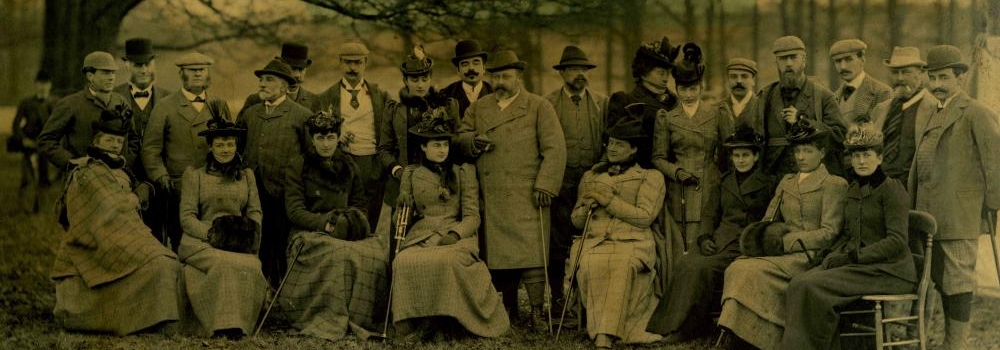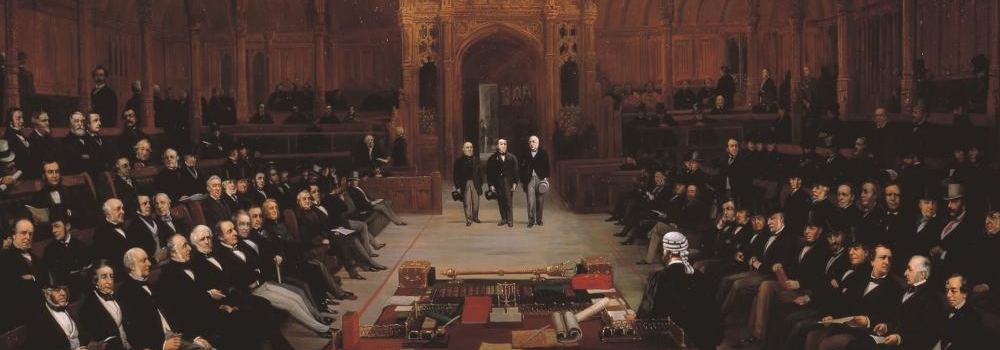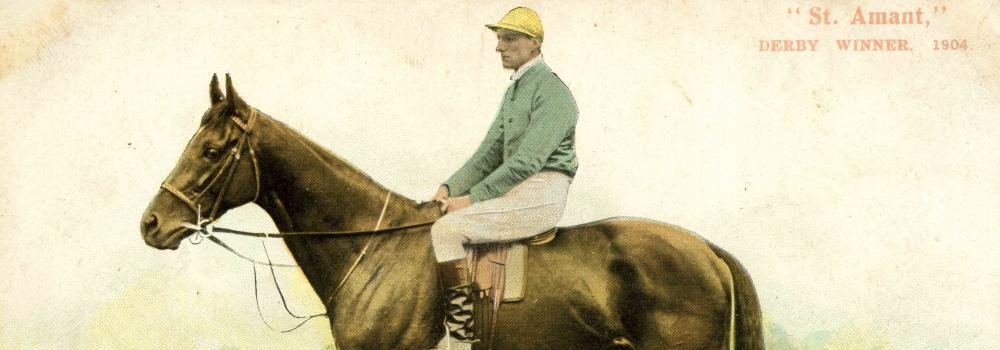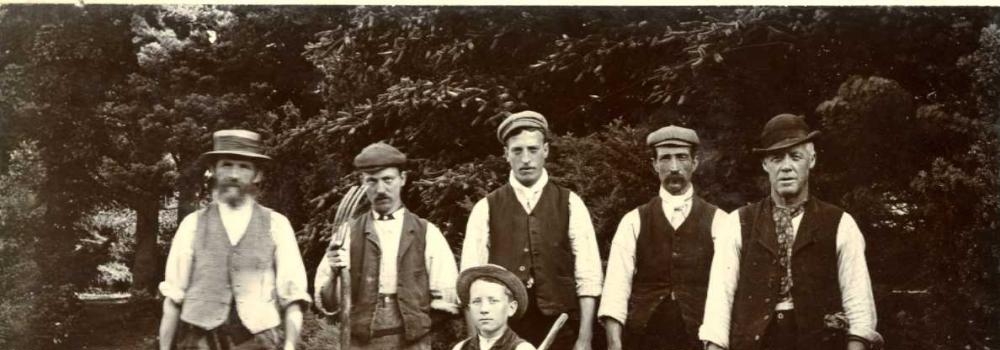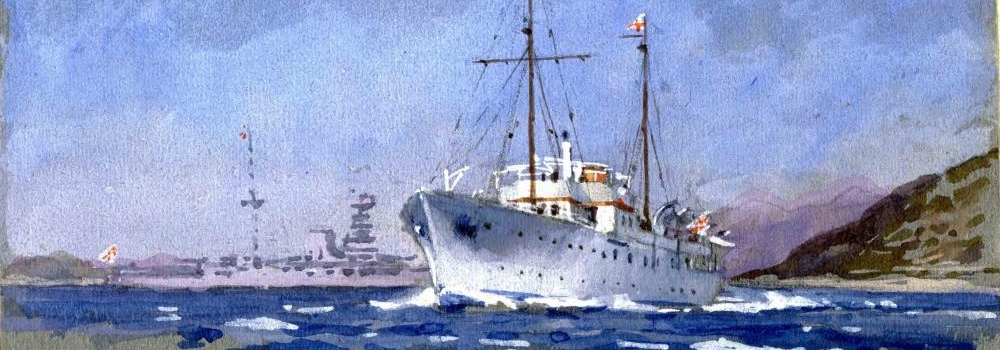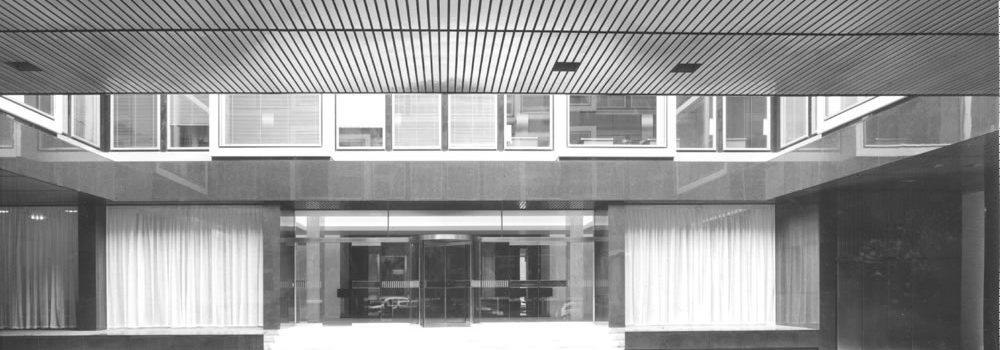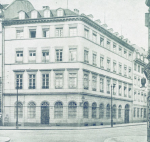M A Rothschild
Mayer Amschel Rothschild (1744-1812) laid the foundations on which his five sons would build their Europe-wide businesses. From humble beginnings he became Court Agent to numerous princes, and holder of the monopoly on the management of the finances of the immensely wealthy Elector of Hesse-Cassel. As a result of these dealings, Mayer Amschel amassed a not inconsiderable fortune and, in 1810, renamed his firm M A Rothschild und Söhne, establishing a partnership with the four sons still in Frankfurt, his son Nathan Mayer Rothschild (1777-1836) having already established a business in Manchester and London.
The first place of business in Frankfurt was also the family home, the ‘House of the Green Shield’ in the Judengasse, where Mayer Amschel and his family moved in 1784. In 1795, after the Frankfurt city council abolished the status that prohibited Jews from owning property outside of Judengasse, Mayer Amschel relocated his business premises to Schnurgasse and his warehouse to Trierischer Hof outside the Jewish ghetto.
M A Rothschild und Söhne
Mayer Amschel died in 1812, and his eldest son, Amschel Mayer (1773-1855), took over the management of what was now the Frankfurt House of the Rothschild banking business. In 1813, a year after his father’s death, Amschel had an office building erected at 146, Fahrgasse to house the banking business of M A Rothschild und Söhne [M A Rothschild and Sons]. The imposing building, in the classical style, stood at the corner of Fahrgasse and the Judengasse. The Frankfurt bank was, according to a contemporary description, was open plan in its design: "He [Salomon] sits in his office in the midst of his clerks like a Padishah; below him are his secretaries, and around him may be seen a crowd of brokers, for ever coming and going. With a few words he dismisses each, for like a true business genius he knows at once what answer to give to every question, and what decision to arrive at on any business that may be laid before him for consideration... To speak to him privately on a matter of business is well-nigh impossible; everything in his office is done openly as in a law court." The House took a lead in the business of government bonds, while Amschel’s partners, his brothers Salomon (1774-1855) and Carl (1788-1855), travelled from court to court and congress to congress, making connections and negotiating contracts. Salomon and Carl eventually set up satellite Houses, in Vienna and Naples respectively, and continued to conduct major bond transactions on behalf of the Frankfurt House. The five Rothschild brothers were enobled by the Austrian Emperor in 1822.
Closure of the Frankfurt house
Amschel Mayer Rothschild died childless, and the son of his brother Salomon, Anselm (1803-1874), and the sons of his brother Carl, Mayer Carl (1820-1866) and Wilhelm Carl (1828-1901) assumed responsibility for the business from 1855. By 1901, and the death of the bank’s last remaining partner, Wilhelm Carl, Frankfurt was no longer a significant financial centre. No family members in London, Paris or Vienna wished to move to the Prussian city, and the decision was taken to liquidate the Frankfurt banking house. The remaining business was transferred to the Disconto Gesellschaft of Berlin, which established a Frankfurt office in order to handle its new business, and the liquidation of the Frankfurt business was managed by the London house.
Regrettably, most of the archives of the Frankfurt business were destroyed in the early twentieth century. Joseph Nauheim, a senior clerk at the London house, managed the liquidation of the Frankfurt business on behalf of Nathaniel, 1st Lord Rothschild. Thanks to the intervention of Nauheim, Dr Christian W. Berghoeffer, the former director of the Baron Carl von Rothschild Public Library in Frankfurt managed to rescue the oldest business letters and account books, the plan being to preserve these documents as a ‘closed collection’, under the seal of the Frankfurt Rothschild Library. However, this proposal met with the opposition of the then head of the Paris House, Alphonse de Rothschild (1827-1905), who had most of the papers transferred to the rue Laffitte and under the instructions of Neuburger, Baron Alphonse' right-hand man, many of the remaining papers of the Frankfurt business transferred to Paris were destroyed. However, not all was lost. Nauheim took back to London some documents relating to the liquidation of the business, and documentation relating to the Rothschild family trust in Frankfurt, including the earliest Rothschild Partnership agreement, from 1810, and other historical papers. These can now be found in the archive collections of London house.
Museum Jüdischer Altertümer und von Rothschild Museums, 146 Fahrgasse
After the Frankfurt business was closed, the former Rothschild bank’s building at 146 Fahrgasse was lent to the Jewish community for various uses. One of the rooms at 146 Fahrgasse was used to display a collection of Judaica (later the Museum of Jewish Antiquities), under the auspices of the Israelite Community in Frankfurt am Main. The original banking offices of the family were preserved on the first floor, and many family heirlooms and pictures were added to the collection. In 1902, the Judisches Haushaltungsschule (the Jewish School of Domestic Science), which had been established in 1897 to train Jewish school girls in ‘domestic knowledge’, moved to refurbished rooms at 146 Fahrgasse. In 1903, the premises were given to the school by the Rothschilds, rent-free.
In 1922, Adelheid (neé von Rothschild) (1853-1935), the wife of Edmond de Rothschild (1845-1934), with the aid of her mother Hannah Mathilde (1832-1924), Wilhelm Carl's widow, made a significant donation to the museum of Jewish antiquities, renaming it the 'Museum Jüdischer Altertümer und von Rothschild Museums' in honour of Hannah Mathilde's 90th birthday. The collections were further enhanced when the merchant Sigmund Nauheim (1874-1935) bequeathed his Judaica collection to the Museum of Jewish Antiquities. The museum was liquidated under the Nazis; it was looted and most of its holdings were destroyed or dispersed; in a 'rescue operation', the director of the city's historical museum saved iconic pieces by hiding them in his own collection, secreting them in cellars and bunkers in Frankfurt and the surrounding area. However, much was lost in air raids on the city. After the end of the war, the Jewish Cultural Reconstruction Committee sifted through 'heirless Jewish cultural property' and in 1951 distributed it to Jewish museums and communities around the world. Two portraits of the Rothschild family that were on display in the Museum were recovered after the war, marriage portraits of Charlotte (1819-1884), daughter of Carl Mayer (1788-1855) from the Naples branch, and Lionel (1808-1879), son of Nathan (1777-1836) from the London branch. These are now in the Israel Museum Jerusalem.
List of the family members who have led the Frankfurt business.
M A Rothschild
Mayer Amschel Rothschild (1744-1812)
c.1768-1812M A Rothschild und Söhne
Mayer Amschel Rothschild (1744-1812)
1810-1812Baron Amschel Mayer von Rothschild (1773-1855)
1812-1855Baron Mayer Carl von Rothschild (1820-1866) (Joint Partner)
1855-1886Baron Wilhem Carl von Rothschild (1828-1901) (Joint Partner)
1855-1901In 1901, the Frankfurt business was voluntarily liquidated by the Rothschild family, there being no male heir to take on the business.

